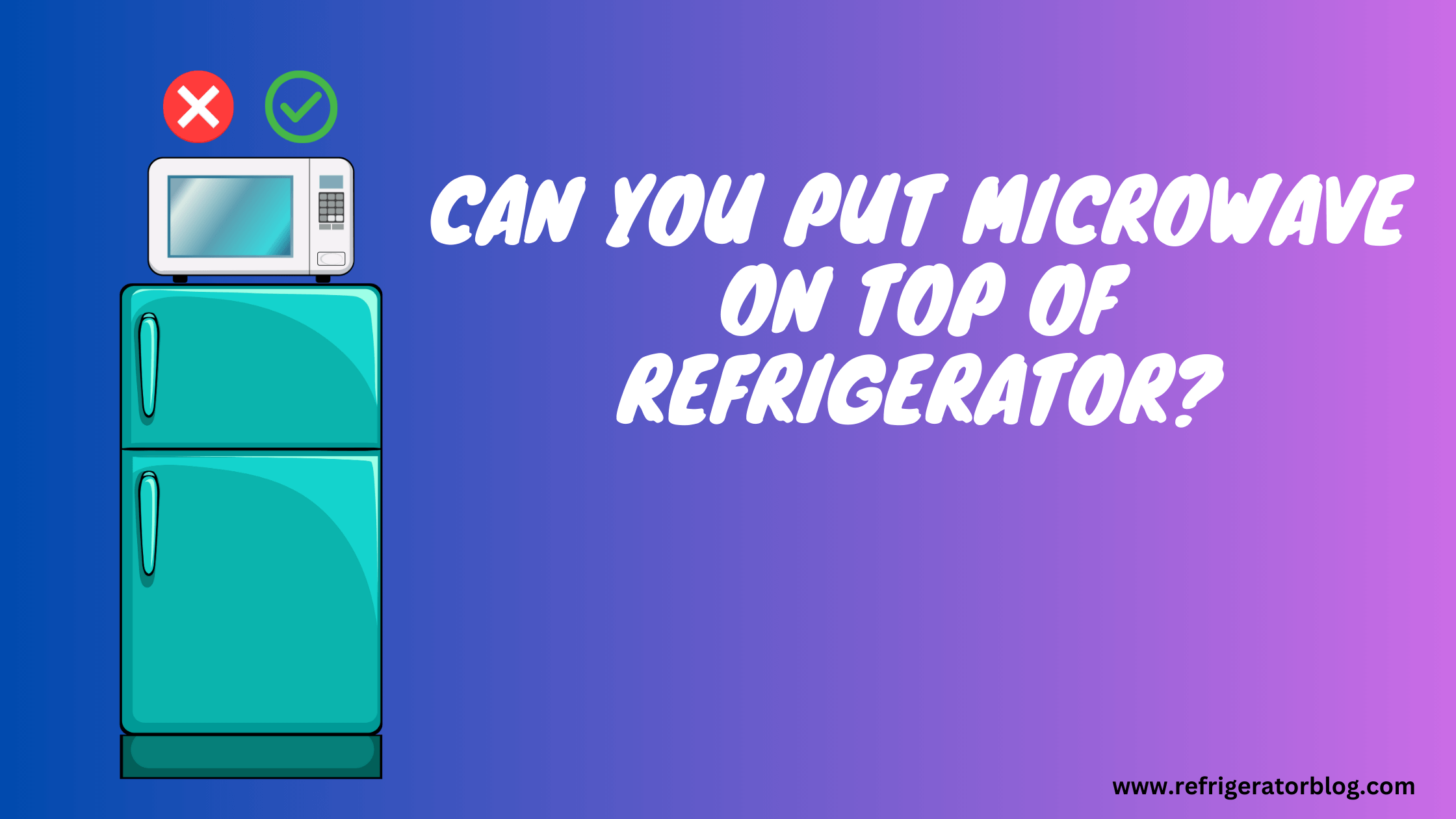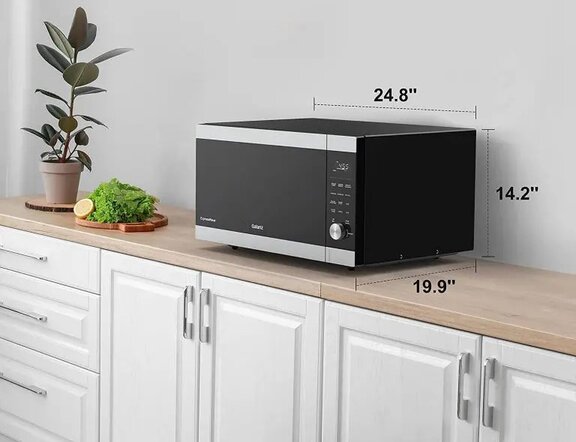Organizing kitchen appliances can be challenging, especially finding a place for your toaster, blender, coffee maker, and microwave. You might wonder, Can you put microwave on top of refrigerator?
While possible, it may not always be the best decision due to issues like heat emission, stability, and accessibility. This decision depends on your specific circumstances.
Many people have the same question. Is it safe and practical? Does it impact the appliance efficiency? Let’s explore.
Table Of Contents

Factors to Consider Before Putting Microwave on Top of Refrigerator
When deciding where to place your microwave, such as on top of your refrigerator, you need to consider certain factors. These can affect the functionality, safety, and lifespan of your appliances.

Can You Put Microwave on Top of Refrigerator?
Yes, you can out microwave on top a refrigerator but it’s not just about saving space or convenience. Safety and efficiency are key considerations. It’s not a one-size-fits-all solution.
Before deciding, think about stability, heat, ventilation, height, and power cord length. Every kitchen is different and what works for one might not work for another. Assess your situation before making a decision.
Despite being technically possible, always check the appliance manuals or seek professional advice first. If the manuals say not to do it, listen to them. They know their products best.
So, if after considering all aspects, conditions are suitable, you can put your microwave on your fridge.
Pros and Cons of Putting Microwave on Top of Refrigerator
Have you considered putting your microwave on your fridge? It’s a popular space-saving idea. Let’s look at the pros and cons.
- Space Saving: This is a practical solution for small kitchens.
- Convenience: If your fridge is at a good height, this placement may provide easier access.
- Cost Effective: You won’t need a separate stand or cabinet for the microwave.
- Heat Concerns: Both appliances generate heat, which could potentially cause a fire hazard or shorten the microwave’s lifespan.
- Inconvenience: For shorter people, this placement may make hot food removal and cleaning difficult, and potentially risky.
- Damage to the Refrigerator: The microwave’s weight and heat could damage your refrigerator over time.
Why Do People Consider Putting Microwave on Top of Refrigerator?
People often place microwaves on top of refrigerators. The main reasons include saving space, ease of use, and maintaining a tidy countertop. Let’s explore further.
minimalism, you might prefer this setup.
However, it’s necessary to consider the safety and practicality of this arrangement. Not every setup is suitable for everyone, so weigh the pros and cons to decide if it’s the right choice for your kitchen.
Frequently Asked Questions
We’re addressing common questions on microwave and refrigerator placement. Get clear, concise answers here to make informed decisions. Let’s dive in!
What Is the Weight Limit for Placing a Microwave on Top of a Refrigerator?
Most refrigerators can handle about 100 lbs on top, but this can vary by model. The average microwave weighs around 40-50 lbs. Therefore, weight-wise, it’s usually safe to put a microwave on top of the refrigerator.
However, it’s essential to consider other factors like stability, ventilation, and accessibility. Always check the user manual or consult with the manufacturer to avoid any mishaps.
Is It Safe to Put Heavy Items on Top of My Refrigerator?
While it might seem like a space-saving solution, placing heavy items such as a microwave atop your refrigerator is not advisable.
The reason? Excessive weight may cause your refrigerator to malfunction, or worse, cause structural damage. This is especially concerning for older or smaller refrigerators.
Can the Vibration From the Refrigerator Affect the Microwave?
Yes, vibrations from the refrigerator could potentially affect the microwave. Refrigerators often generate vibrations during their operation, which may disrupt the microwave’s performance over time.
Conclusion
Putting a microwave on a fridge needs careful thought. Consider the fridge’s strength, microwave’s weight, and ventilation.
Check that your fridge can bear the weight and there is enough ventilation for both appliances. Think about the possible accessibility and safety issues. If unsure, seek advice from an appliance expert or the manufacturer’s guidelines.
Though it might seem a good space-saving idea, it’s a significant decision. Do thorough research before proceeding. Your kitchen should be safe and functional.
